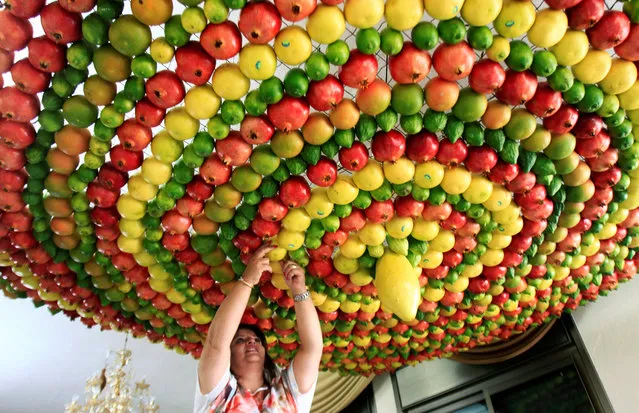
A woman from the Samaritan sect decorates with fruits and vegetables a traditional hut known as a “sukkah”, which is a ritual hut used during the Jewish holiday of Sukkot, on Mount Gerizim on the outskirts of the West Bank city of Nablus, October 13, 2016. (Photo by Abed Omar Qusini/Reuters)
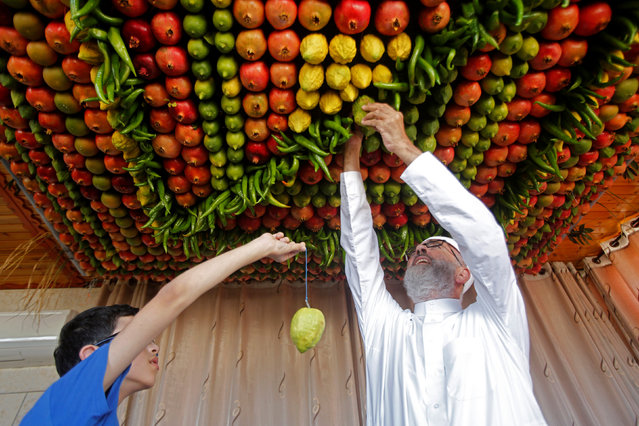
Members of the Samaritan sect decorate with fruits and vegetables a traditional hut known as a “sukkah”, which is a ritual hut used during the Jewish holiday of Sukkot, on Mount Gerizim on the outskirts of the West Bank city of Nablus, October 13, 2016. (Photo by Abed Omar Qusini/Reuters)
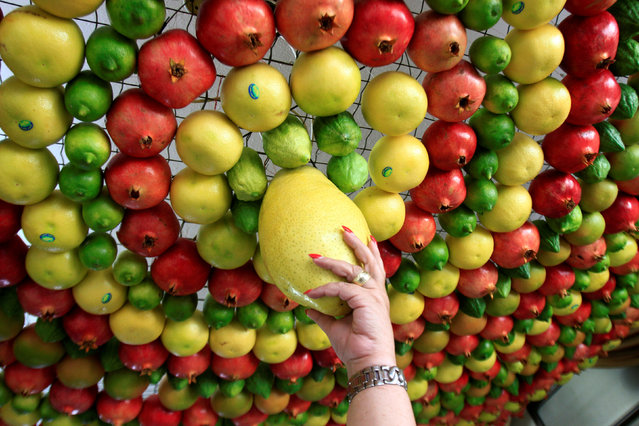
A woman from the Samaritan sect decorates with fruits and vegetables a traditional hut known as a “sukkah”, which is a ritual hut used during the Jewish holiday of Sukkot, on Mount Gerizim on the outskirts of the West Bank city of Nablus, October 13, 2016. (Photo by Abed Omar Qusini/Reuters)
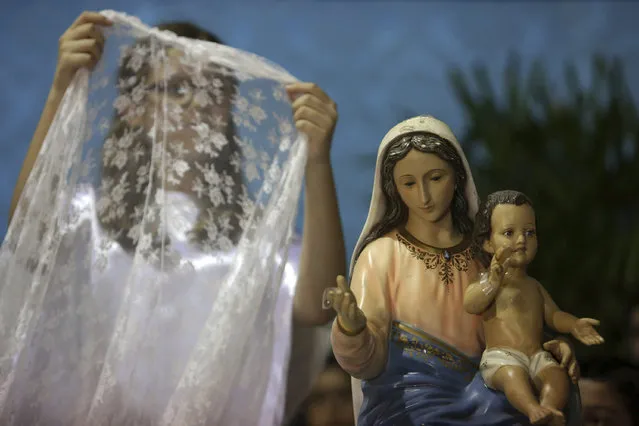
In this October 7, 2016 photo, a girl prepares to place a veil on a statue of Our Lady of the Rosary during the annual Afro-Christian Congada celebration in Catalao, Goias state, Brazil. According to local legend, the ritual was first performed by Black slaves in the 1800s in Brazil where the Catholic icon, Our Lady of the Rosary, is associated with the African divinity Yemanja, or Sea Mother. (Photo by Eraldo Peres/AP Photo)
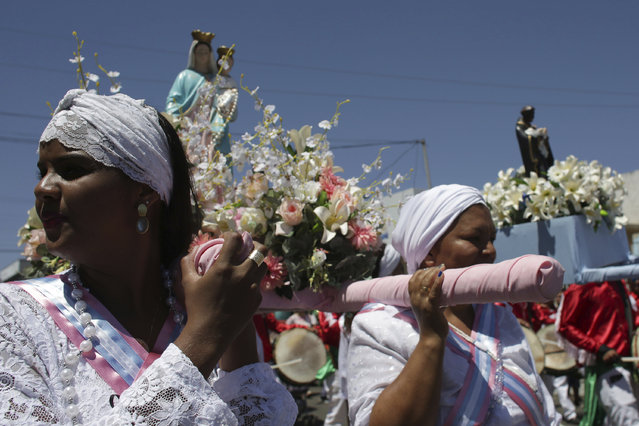
In this October 9, 2016 photo, women carry statues of Our Lady of the Rosary and St. Benedict during the annual Afro-Christian Congada celebration in Catalao, Goias state, Brazil. Our Lady of the Rosary represents the African divinity Yemanja, or Sea Mother, and St. Benedict corresponds to the African divinity Ossaim, a god of nature. (Photo by Eraldo Peres/AP Photo)
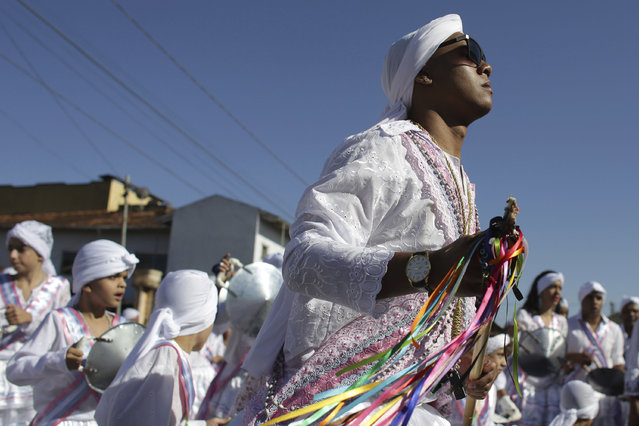
In this October 9, 2016 photo, Matheus Alves, captain of the Mozambique Our Lady of the Rosary dance group, performs during the annual Afro-Christian Congada celebration in Catalao, Goias state, Brazil. His turban is the signature of Mozambique dance group, as they pay tribute to St. Benedict and Our Lady of the Rosary. (Photo by Eraldo Peres/AP Photo)
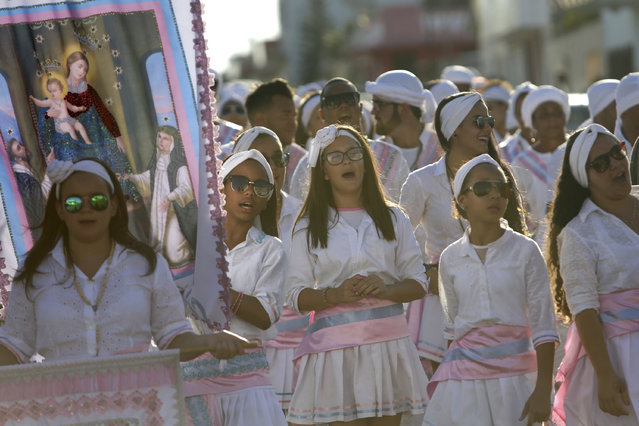
In this October 9, 2016 photo, girls sing as they carry an image of Our Lady of Rosary during the annual Afro-Christian Congada celebration in Catalao, Goias state, Brazil. The group's leader sings a verse, and members repeat, making references to Brazil's history of slavery as well as Catholic Church and African traditions, a testament to the mixing of cultures, religions and races in Latin America’s largest nation. (Photo by Eraldo Peres/AP Photo)
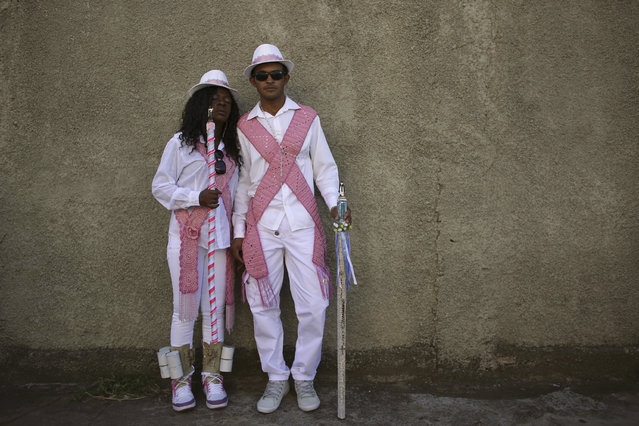
This October 9, 2016 photo shows the captain, right, and a dancer with the Mozambique Sacred Heart of Mary dance group, during the annual Afro-Christian Congada celebration in Catalao, Goias state, Brazil. The Congada represents an African royal court, with a king, queen, generals, captains and servants. (Photo by Eraldo Peres/AP Photo)
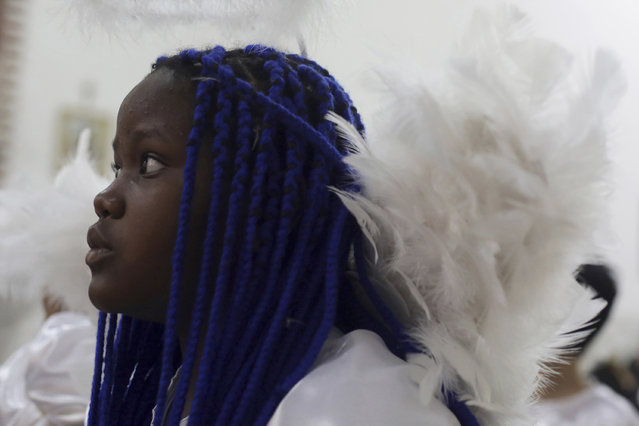
In this October 7, 2016 photo, a girl dressed as an angel attends a Mass in honor of Our Lady of Rosario during the annual Afro-Christian Congada celebration in Catalao, Goias state, Brazil. Some children participate in the annual celebration dressed as angels, considered a sacred symbol representing purity. (Photo by Eraldo Peres/AP Photo)
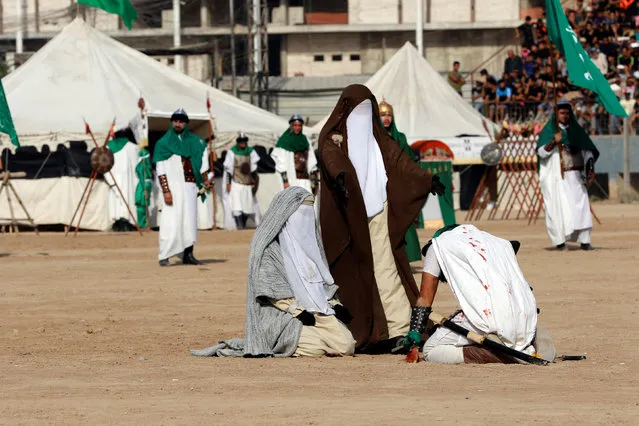
Local actors dressed as ancient warriors re-enact a scene from the 7th century battle of Kerbala during commemoration in Sadr City, Baghdad, Iraq October 12, 2016. (Photo by Ahmed Saad/Reuters)
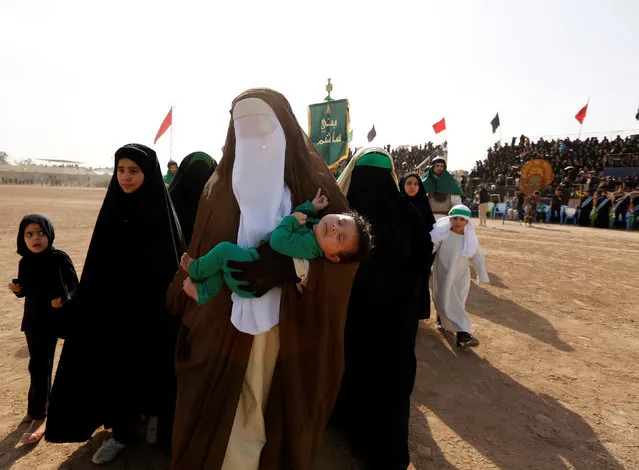
Local actors dressed as ancient warriors re-enact a scene from the 7th century battle of Kerbala during commemoration in Sadr City, Baghdad, Iraq October 12, 2016. (Photo by Ahmed Saad/Reuters)
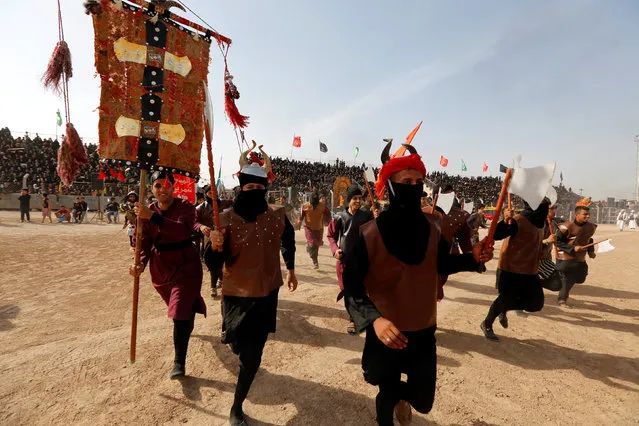
Local actors dressed as ancient warriors re-enact a scene from the 7th century battle of Kerbala during commemoration in Sadr City, Baghdad, Iraq October 12, 2016. (Photo by Ahmed Saad/Reuters)
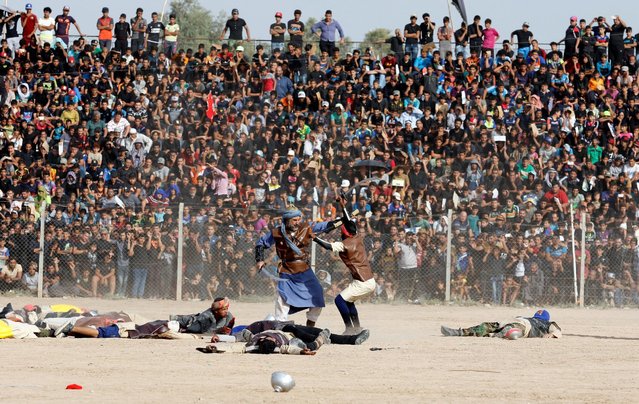
Local actors dressed as ancient warriors re-enact a scene from the 7th century battle of Kerbala during commemoration in Sadr City, Baghdad, Iraq October 12, 2016. (Photo by Ahmed Saad/Reuters)
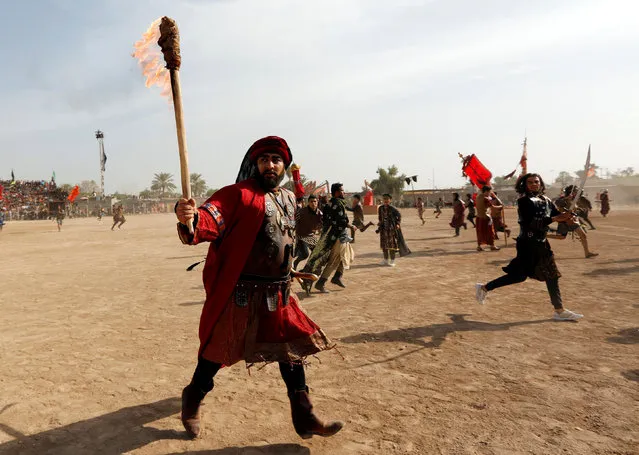
Local actors dressed as ancient warriors re-enact a scene from the 7th century battle of Kerbala during commemoration in Sadr City, Baghdad, Iraq October 12, 2016. (Photo by Ahmed Saad/Reuters)
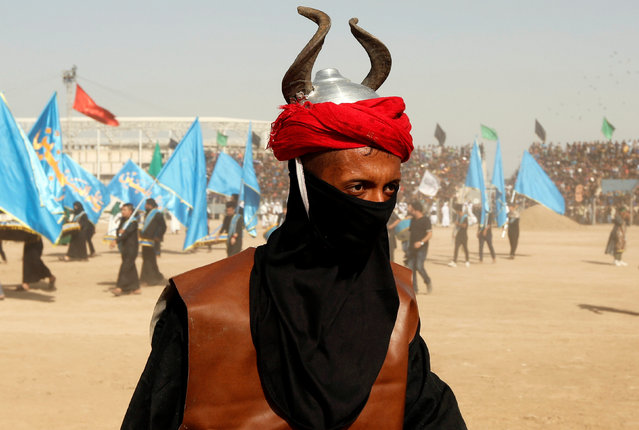
Local actors dressed as ancient warriors re-enact a scene from the 7th century battle of Kerbala during commemoration in Sadr City, Baghdad, Iraq October 12, 2016. (Photo by Ahmed Saad/Reuters)
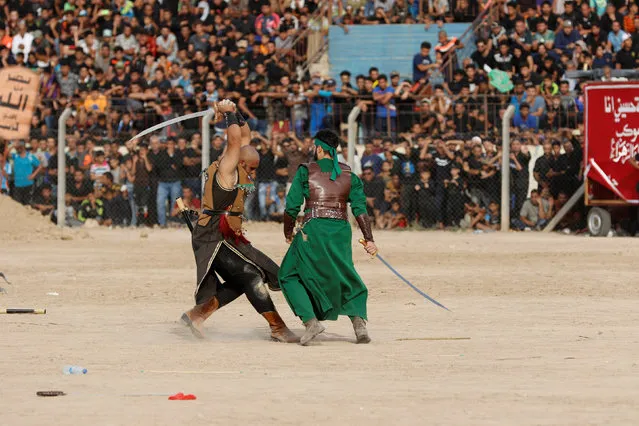
Local actors dressed as ancient warriors re-enact a scene from the 7th century battle of Kerbala during commemoration in Sadr City, Baghdad, Iraq October 12, 2016. (Photo by Ahmed Saad/Reuters)
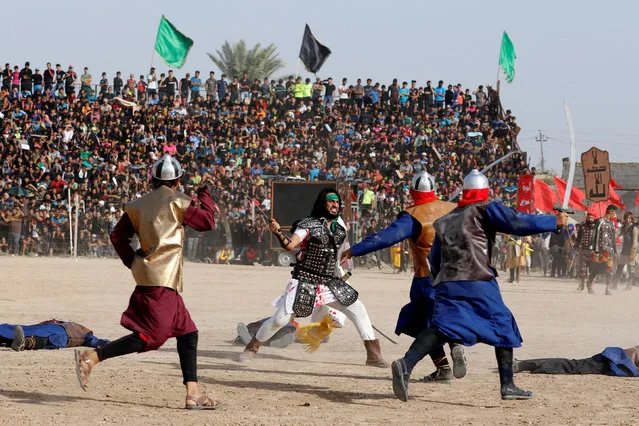
Local actors dressed as ancient warriors re-enact a scene from the 7th century battle of Kerbala during commemoration in Sadr City, Baghdad, Iraq October 12, 2016. (Photo by Ahmed Saad/Reuters)
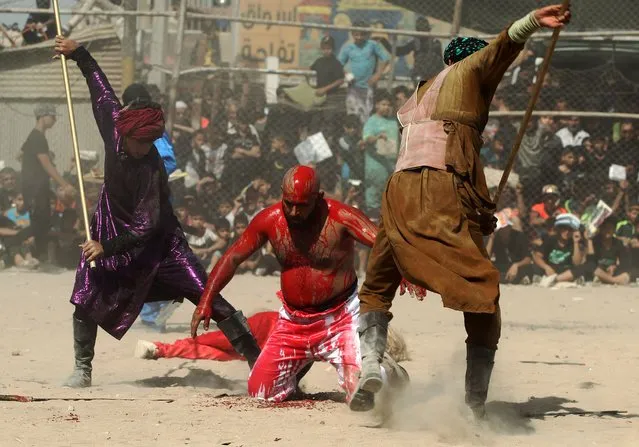
Iraqi Shiite men perform a reenactment of the Battle of Karbala as part of the Ashura commemorations in Baghdad on October 12, 2016. (Photo by Ahmad Al-Rubaye/AFP Photo)

An Indigenous schoolchild dressed in traditional attire rides a horse during a rally to commemorate Indigenous Resistance Day in Catarina town, Nicaragua October 12, 2016. This holiday coincides with Columbus Day which commemorates Christopher Columbus landing in America in 1492. But rather than celebrating the discovery of the Americas, the Nicaraguans observe Indigenous Resistance Day to celebrate the bravery of the indigenous population in the fight against the Spanish conquistadors. (Photo by Oswaldo Rivas/Reuters)
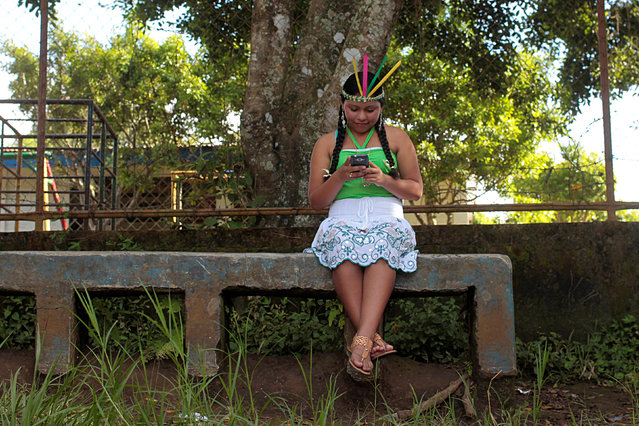
An Indigenous schoolchild dressed in traditional attire checks her mobile phone after a rally to commemorate Indigenous Resistance Day in Catarina town, Nicaragua October 12, 2016. (Photo by Oswaldo Rivas/Reuters)
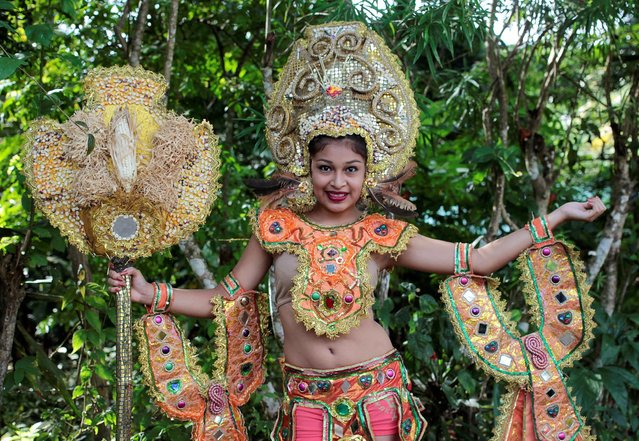
An Indigenous schoolchild dressed in traditional attire takes part in a rally to commemorate Indigenous Resistance Day in Catarina town, Nicaragua October 12, 2016. (Photo by Oswaldo Rivas/Reuters)
14 Oct 2016 12:04:00,
post received
0 comments
